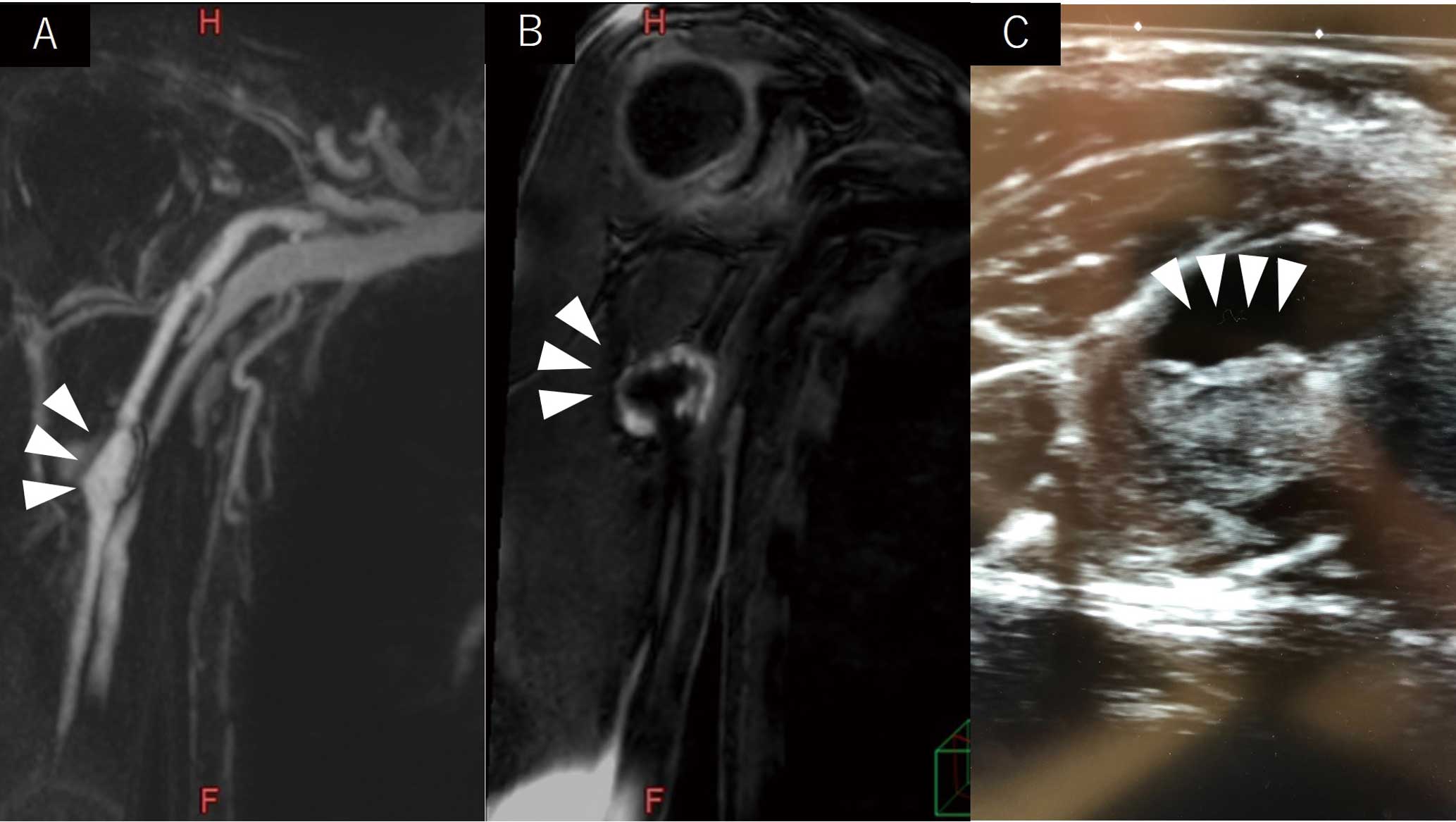2021 年 3 巻 6 号 p. 356-357
2021 年 3 巻 6 号 p. 356-357
A 30-year-old asymptomatic male with a giant coronary aneurysm attended our hospital for a follow-up examination. The patient also had a childhood history of Kawasaki disease. Non-contrast-enhanced magnetic resonance imaging (MRI) was performed to assess the coronary aneurysm and investigate the presence of aneurysms in other blood vessels. The known coronary aneurysm had not increased in size since the previous examination. However, concomitantly, a huge aneurysm was detected in the right upper arm (Figure A). Furthermore, a high-intensity plaque was observed at the same site (Figure B). When the site was examined further by arterial ultrasound (Figure C), a fresh floating thrombus was found and, consequently, warfarin therapy was initiated.

(A) Magnetic resonance angiography findings showing an aneurysm in the right brachial artery (arrowheads) and the development of collateral circulation (coronal image). (B) Three-dimensional non-contrast T1-weighted magnetic resonance imaging. The following parameters were combined with black-blood imaging using the inversion recovery and fat suppression methods. A high-intensity plaque was observed, consistent with the aneurysm (arrowheads; coronal image). (C) Brachial arterial ultrasound showing a mobile thrombus (arrowheads).
A previous study reported that a high-intensity plaque seen on MRI reflects thrombus and arteriosclerosis.1 Because Kawasaki disease is systemic vasculitis, the inflammation may spread not only to the coronary arteries, but also to systemic arteries throughout the body. In Kawasaki disease, which often occurs in young patients, non-contrast MRI without exposure can be effective for evaluation of the entire systemic vasculature, including the detection of coronary aneurysms.